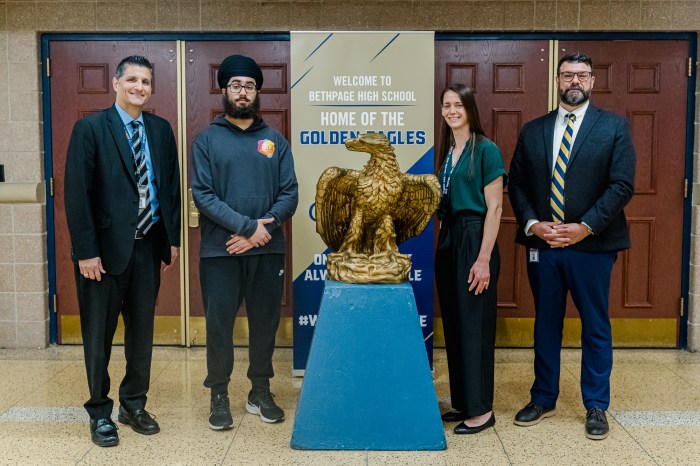Famous American painter Georgia O’Keeffe was the topic of discussion at the Plainview Old-Bethpage Public Library on Feb. 20.
Members of the audience were given an in-depth look into the life and artwork of O’Keeffe through a self-made and researched lecture and slideshow by art appraiser Louise Cella Caruso.
O’Keeffe lived for 98 years. Within her lifetime, she was granted the Medal of Arts by Ronald Regan, and in 1938, she was selected as one of the 12 most outstanding women of the previous 50 years. When she passed away she was accorded the honor of a first page obituary in the New York Times.
As an artist, O’Keeffe was able to combine the art styles abstract and representational, and joined them together beautifully which is what makes her so unique, according to Caruso.
Her flower paintings became her best-known works. The paintings were magnified and gave a “bee’s eye view” of the flower, according to Caruso.
Many critics insisted on giving O’Keeffe’s artwork a sexual symbolism.
“She always strove to contradict the notion that her subject was related to her gender,” explained Caruso.
In her lecture, Caruso purposely chose flowers that were not imitative of the female form to show the audience that O’Keeffe’s paintings were much more than that.
In the 1930’s, O’Keeffe created skeleton evocations of New Mexico.
“O’Keeffe presents the skeleton as an emblem of the dessert,” said Caruso.
Caruso showed the audience many images of her paintings, including one of O’Keeffe’s most famous skull paintings, “Cow Skull: Red, White, and Blue” which is currently located at the Metropolitan Museum of Art in New York City.
“O’Keeffe has been so identified with New Mexico that we sometimes overlook her life as a serious New Yorker,” said Caruso.
Caruso explained that when O’Keeffe was living in New York in the 1920’s, the city landscape became the subject of her work. In 1927, she painted oil on canvas “Radiator Building—Night New York,” which is presently known as the Bryant Park Hotel.
Many of the people in the audience already had knowledge of some aspects about O’Keeffe’s artwork, but were also surprised with the information that they received from the lecture.
Members of the audience, Lola Ferris and Libby Blum, were familiar with O’Keeffe’s flower and skull paintings, but also learned about another side of her artwork.
Although she was familiar with O’Keeffe’s flower paintings, Ferris enjoyed learning about her city landscapes.
“I found out today that she has another body of work that is also exquisite,” she said.
Blum also enjoyed O’Keeffe’s New York City paintings.
“It was interesting that there was a completely different subject that she also painted,” she said.
Ferris commented on how unusual of a woman O’Keeffe was for her time.
“She was outspoken and did what she wanted, and women were not like that.”
O’Keeffe defined herself as an artist despite being married to famous photographer Alfred Stieglitz.
“She was her own person and developed her own style,” said Caruso. “I find her extraordinary.”


































